
Alexander Graham Bell was a Scottish-born inventor, scientist, and engineer who is credited with inventing and patenting the first practical telephone. He also co-founded the American Telephone and Telegraph Company (AT&T) in 1885.

A hydrofoil is a lifting surface, or foil, that operates in water. They are similar in appearance and purpose to aerofoils used by aeroplanes. Boats that use hydrofoil technology are also simply termed hydrofoils. As a hydrofoil craft gains speed, the hydrofoils lift the boat's hull out of the water, decreasing drag and allowing greater speeds.

Baddeck is a village in Victoria County, Nova Scotia, Canada. This village is seventy-eight kilometres west of Sydney. It is Victoria County's shire town and is situated on the northern shore of Bras d'Or Lake on Cape Breton Island.
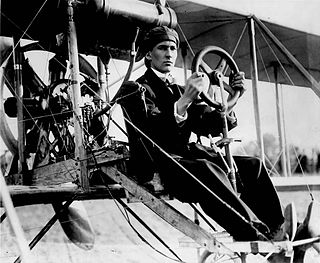
The Aerial Experiment Association (AEA) was a Canadian-American aeronautical research group formed on 30 September 1907, under the leadership of Dr. Alexander Graham Bell.
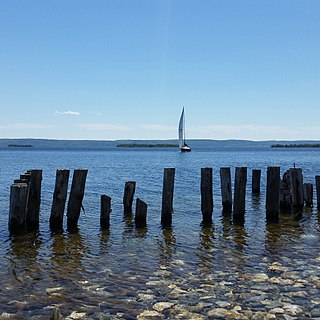
Bras d'Or Lake is an inland sea, or large body of partially fresh/salt water in the centre of Cape Breton Island in the province of Nova Scotia, Canada. Bras d'Or Lake is sometimes referred to as the Bras d'Or Lakes or the Bras d'Or Lakes system; however, its official geographic name is Bras d'Or Lake, as it is a singular entity. Canadian author and yachtsman Silver Donald Cameron describes Bras d'Or Lake as "A basin ringed by indigo hills laced with marble. Islands within a sea inside an island." The lake is connected to the North Atlantic by natural channels; the Great Bras d'Or Channel north of Boularderie Island and the Little Bras d'Or Channel to south of Boularderie Island connect the northeastern arm of the lake to the Cabot Strait. The Bras d'Or is also connected to the Atlantic Ocean via the Strait of Canso by means of a lock canal completed in 1869—the St. Peters Canal, at the southern tip of the lake.

Gilbert Hovey Grosvenor, father of photojournalism, was the first full-time editor of National Geographic (1899–1954). Grosvenor is credited with having built the magazine into the iconic publication that it is today.

HMCS Bras d'Or was a hydrofoil that served in the Canadian Forces from 1968 to 1971. During sea trials in 1969, the vessel exceeded 63 knots, making her the fastest unarmed warship in the world at the time.
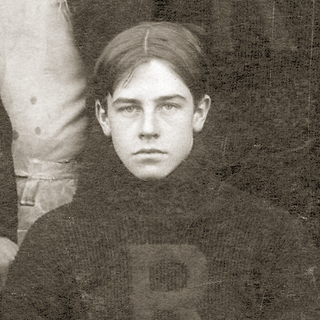
Frederick Walker Baldwin, also known as Casey Baldwin, paternal grandson of Canadian reform leader Robert Baldwin, was a hydrofoil and aviation pioneer and partner of the famous inventor Alexander Graham Bell. He was manager of Graham Bell Laboratories from 1909–32, and represented Victoria in the Nova Scotia Legislature from 1933–37, where he was instrumental in bringing about the creation of Cape Breton Highlands National Park. In 1908, he became the first Canadian and British subject to fly an airplane.

Marion Barbara 'Joe' Carstairs was a wealthy British power boat racer known for her speed and her eccentric lifestyle. In the 1920s she was known as the ‘fastest woman on water’.
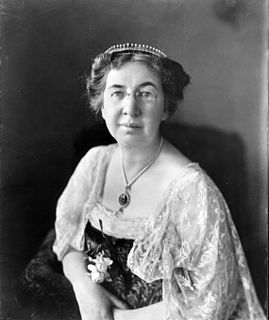
Mabel Gardiner Hubbard, was an American businesswoman, and the daughter of Boston lawyer Gardiner Greene Hubbard. As the wife of Alexander Graham Bell, inventor of the first practical telephone, she took the married name Mabel Bell.

Alexander Graham Bell honors and tributes include honors bestowed upon him and awards named for him.

Beinn Bhreagh is the name of the former estate of Alexander Graham Bell, in Victoria County, Nova Scotia. It refers to a peninsula jutting into Cape Breton Island's scenic Bras d'Or Lake approximately 3 km (1.9 mi) southeast of the village of Baddeck, forming the southeastern shore of Baddeck Bay.
Dorothy Margaret Harley Eber, is a Canadian author and one of the first people to transcribe and publish oral histories of Inuit people in Nunavut in both English and Inuktitut. She has devoted much of her life to preserving the history of the Inuit people. In the 1970s, she was one of the first writers to record their oral history on tape. She then completed the first oral biography of an Inuk, Pitseolak Ashoona, based on first hand accounts. Printed in both English and Inuktitut, it is said that Pitseolak: Pictures out of my Life was the first book, after the Bible, to be published in the Inuit language. Her multiple other works, including films and exhibitions, as well as her written material, have provided Canadians with a better understanding of Inuit culture. She is invited regularly to present at museums and cultural institutions worldwide, international conferences, and has contributed articles to international journals. She has served on committees to judge annual Inuit art competitions.

Alexander Graham Bell National Historic Site is a 10-hectare (25-acre) property in Baddeck, Cape Breton, Nova Scotia, Canada, overlooking the Bras d'Or Lakes. The site is a unit of Parks Canada, the national park system, and includes the Alexander Graham Bell National Historic Site, which contains the largest repository of artifacts and documents from Bell's years of experimental work in Baddeck. This site was designated a National Historic Site in 1952.
Baddeck, Nova Scotia is a village founded in 1908, with a history stretching back to early Mi'kmaq, French and British settlements. The village was home to Alexander Graham Bell and was witness to the first flight in the commonwealth with Bell's Silver Dart.

Dr. Mabel Harlakenden Grosvenor was a Canadian-born American pediatrician, and a granddaughter and secretary to the scientist and telephone inventor Alexander Graham Bell. She lived in both Beinn Bhreagh, Nova Scotia and Washington, D.C.
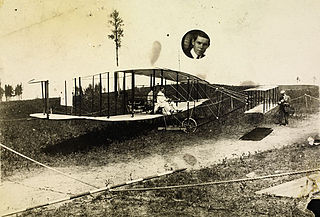
The Canadian Aerodrome Baddeck No. 1 and Baddeck No. 2 were early aircraft designed by John McCurdy and Frederick W. "Casey" Baldwin, under the guidance of Alexander Graham Bell for the Canadian Aerodrome Company. The Baddeck No. 1 was the first aircraft designed and built in Canada. The aircraft were constructed at Bell's laboratory at Beinn Bhreagh, Baddeck, Nova Scotia using local labour. After being constructed in Baddeck, the Baddeck No. 1 was shipped to Petawawa, Ontario where it made its first flight on 11 August 1909.
The Canadian Aerodrome Company was the first commercial enterprise in the British Empire to design and manufacture aircraft. The company was formed following the dissolution of Alexander Graham Bell's Aerial Experiment Association. The company was established by Frederick W. "Casey" Baldwin and J.A.D. McCurdy in 1909, with the financial backing of Alexander Graham Bell. The company was headquartered in Baddeck, Nova Scotia at the Kite House at Bell's Beinn Bhreagh estate.

The Hubbard Monoplane, also nicknamed "Mike", was an early aircraft designed by John McCurdy and built by the Canadian Aerodrome Company.

HD-4 or Hydrodome number 4 was an early research hydrofoil watercraft developed by the scientist Alexander Graham Bell. It was designed and built at the Bell Boatyard on Bell's Beinn Bhreagh estate near Baddeck, Nova Scotia. In 1919, it set a world marine speed record of 70.86 miles per hour (114.04 km/h).
















